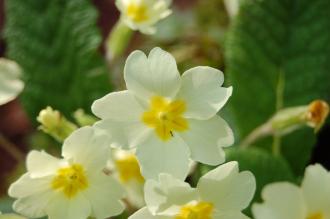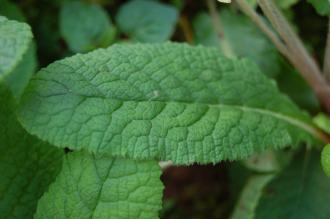
Primula vulgaris (13/04/2014, Torquay, Devon)
Position: Dappled shade
Flowering period: Spring
Soil: Moist, well drained
Eventual Height: 30cm
Eventual Spread: 30cm
Hardiness: 5a, 5b, 6a, 6b, 7a, 7b, 8a, 8b, 9a, 9b
Family: Primulaceae
Primula vulgaris is an evergreen, herbaceous perennial with a rosette forming habit. Its mid green leaves are elliptic with irregularly dentate margins, tapering at the base, up to 25cm long, 6cm broad and arranged in a rosettes. Its fragrant pale yellow (occasionally pink) flowers are flat, up to 4cm across and appear singularly on short stems.

Primula vulgaris Flower (13/04/2014, Torquay, Devon)
Primula vulgaris, commonly known as the Primrose, is native to west and south Europe (including the UK) and north west Africa. In its native habitat it grows in open deciduous woodland.
The etymological root of the binomial name Primula is from the Latin name for the Primrose, prima rosa meaning ‘first rose’. Vulgaris
The landscape architect may find Primula vulgaris useful as part of a native wild flower mix, particularly in open deciduous woodland.
Ecologically, Primula vulgaris is attractive to pollinating insects.

Primula vulgaris Leaf (13/04/2014, Torquay, Devon)
The Royal Horticultural Society has given Primula vulgaris their prestigious Award of Garden Merit in 1998.
Primula vulgaris prefers moist, humus rich, well drained soils. It tolerates most pH of soil.
Primula vulgaris requires little maintenance. Large clumps may be divided in autumn or spring.

